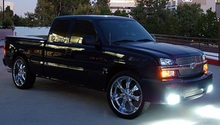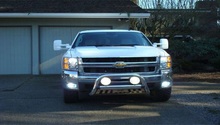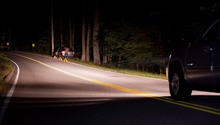Chevrolet Silverado: Headlight Legal Requirements
There are plenty of options for upgrading older headlights or simply enhancing your vehicle's appearance. While HID headlights are very popular, you may find that other headlights work just as well.
This article applies to the Chevrolet Silverado 1500 (2007-2013).
Swapping out your Silverado's headlights is a relatively simple and straightforward task. However, you will need to make sure that any potential upgrades are legal on the road. Later model Silverado trucks come with bright, crisp halogen projector headlamps. However, other alternatives, such as High Intensity Discharge (HID) and LED headlamps can light up the road even more. Unfortunately, these alternative headlamp options aren't always legal. While HID lights cast a bright white glow, they can also temporarily blind oncoming drivers. Here is a breakdown of the main headlight alternatives as well as their legal requirements.
High Intensity Discharge (HID)
HID lights typically emit light that's two to three times brighter than traditional halogen lamps. These lights are crafted with a blend of gases and rare metals, which are heated up to high temperatures to attain that characteristic bright white glow. While they do a great job of brightening up the road, HID lights also cause an annoying – and sometimes temporarily blinding – glare that other drivers on the road must contend with. While these lights were once largely reserved for higher-end luxury vehicles, they are becoming increasingly common on a variety of makes and models. A large part of the legality of HID headlights stems from aftermarket HID conversion kits. If you're like most drivers who want to swap out your traditional halogens for something a bit better and brighter, an HID conversion kit seems like the most reasonable solution.
In short, swapping out halogen bulbs with HID bulbs can be unsafe and downright illegal. This is because the halogen bulb housing is specifically calibrated for halogen bulbs. In other words, the housing enables a cerain amount of glare on the road. HID bulbs fit differently and don't have the correct amount of glare reduction when they're used in a traditional halogen bulb housing.

Light-Emitting Diode (LED)
LED lights are another quite popular choice for car owners looking for an upgrade. These lights look appealing and stylish and generally don't get as hot as other types of bulbs. While LED lights don't acheive the same level of brightness as HID lights, they tend to attain their peak brightness level faster than other types of headlights. As with HID lights, LED headlights were once primarily available on higher-end vehicles. However, they are becoming more mainstream. A number of modern cars also feature a halo light, where LED bulbs illuminate rings on the front headlamps. You are allowed to use these halo housings on the road provided they are illuminated with a white or yellow light. A very light blue tint is often also acceptable.

Blacked Out Lights
There's no doubt about it – blacked out headlights look awesome. However, they are illegal (or severely limited when it comes to road use) in most states. If your state does permit this type of light, it is likely to be for off-road use only. The rules may be a little bit more lenient for blacked out taillights – but not overly so. A general rule is that this type of blacked out light is permitted as long as they aren't visible on the car from 1,000 feet.

Related Discussions and Site
- HID Kit on NBS Silverado - Chevroletforum.com
- Are HID Kits Legal or Safe? - Xtremerevolution.net
- Blackout Headlights - Chevroletforum.com






